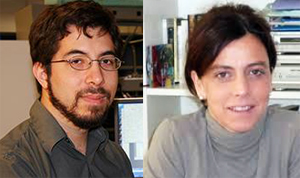14 Nov 2017
Focused laser beam on individual cells could map key brain activities that drive behavior.
Researchers at MIT and Paris Descartes University have developed a new optogenetic technique that uses light to target individual cells bearing engineered light-sensitive molecules, so that individual neurons can be precisely stimulated.Previously, it has been difficult to use optogenetics to target single cells with such precise control. The researchers believe this new development paves the way for studies of how individual cells, and connections among those cells, generate specific behaviors such as initiating a movement or learning a new skill.
“Ideally what one wants to do is play the brain like a piano. One would want to control neurons independently, rather than having them all operate the same way simultaneously, the way traditional optogenetics works, but which normally the brain doesn’t do,” said Ed Boyden, an associate professor of brain and cognitive sciences and biological engineering at MIT, and a member of MIT’s Media Lab and McGovern Institute for Brain Research.
The technique relies on a new type of light-sensitive protein that can be embedded in neuron cell bodies, combined with holographic light-shaping that can focus light on a single cell.
Boyden and Valentina Emiliani, a research director at France’s National Center for Scientific Research (CNRS) and director of the Neurophotonics Laboratory at Paris Descartes University, are the senior authors of the study, which has just been published in Nature Neuroscience. Lead authors are MIT postdoc Or Shemesh and CNRS postdocs Dimitrii Tanese and Valeria Zampini.
Precise control
More than 10 years ago, Boyden and his team first pioneered the use of light-sensitive proteins known as microbial opsins to manipulate neuron electrical activity. These opsins can be embedded into the membranes of neurons, and when they are exposed to certain wavelengths of light, they silence or stimulate the cells. Over the past decade, scientists have used this technique to study how populations of neurons behave during brain tasks such as memory recall or habit formation. Traditionally, many cells are targeted simultaneously because the light shining into the brain strikes a relatively large area. However, as Boyden commented, neurons may have different functions even when they are near each other.
“Two adjacent cells can have completely different neural codes. They can do completely different things, respond to different stimuli, and play different activity patterns during different tasks,” Boyden said. To achieve independent control of single cells, the researchers combined two new advances: a localized, more powerful opsin and an optimized holographic light-shaping microscope.
For the opsin, the researchers used a protein called CoChR, which the Boyden lab discovered in 2014. They chose this molecule because it generates a very strong electric current in response to light (about 10 times stronger than that produced by channelrhodopsin-2, the first protein used for optogenetics). They fused CoChR to a small protein that directs the opsin into the cell bodies of neurons and away from axons and dendrites, which extend from the neuron body. This helps to prevent crosstalk between neurons, since light that activates one neuron can also strike axons and dendrites of other neurons that intertwine with the target neuron.
Boyden and Emiliani then worked to combine the CoChR-opsin approach with a light-stimulation technique that she had previously developed, known as two-photon computer-generated holography (CGH). This can create three-dimensional sculptures of light, which can envelop a target cell.
In the new study, the researchers have showed they could stimulate individual neurons with not only precise spatial control but also great control over the timing of the stimulation. When they target a specific neuron, it responds consistently every time, with variability that is less than one millisecond, even when the cell is stimulated many times in a row. “For the first time ever, we can bring the precision of single-cell control toward the natural timescales of neural computation,” Boyden said.

Optogenetics partners: Boyden and Emiliani.
Using this technique, the researchers were able to stimulate single neurons in brain slices and then measure the responses from cells that are connected to that cell. This paves the way for possible diagramming of the connections of the brain, and analyzing how those connections change in real time as the brain performs a task or learns a new skill. One possible experiment, Boyden says, would be to stimulate neurons connected to each other to try to figure out if one is controlling the others or if they are all receiving input from a far-off controller.
The researchers now plan to extend this approach into living animals. They are also working on improving their targeting molecules and developing high-current opsins that can silence neuron activity
Nature Neuroscience
Further information about this work is available in the abstract to the Nature Neuroscience article, as follows: “Optogenetic control of individual neurons with high temporal precision would enable powerful explorations of how neural circuits operate. Two-photon computer-generated holography enables precise sculpting of light and could enable simultaneous illumination of many neurons in a network, with the requisite temporal precision to simulate accurate neural codes.
”We designed a high-efficacy soma-targeted opsin, finding that fusing the N-terminal 150 residues of kainate receptor subunit 2 (KA2) to the recently discovered high-photocurrent channelrhodopsin CoChR restricted expression of this opsin primarily to the cell body of mammalian cortical neurons. In combination with two-photon holographic stimulation, we found that this somatic CoChR (soCoChR) enabled photostimulation of individual cells in mouse cortical brain slices with single-cell resolution and <1-ms temporal precision. We used soCoChR to perform connectivity mapping on intact cortical circuits.“
| © 2025 SPIE Europe |
|